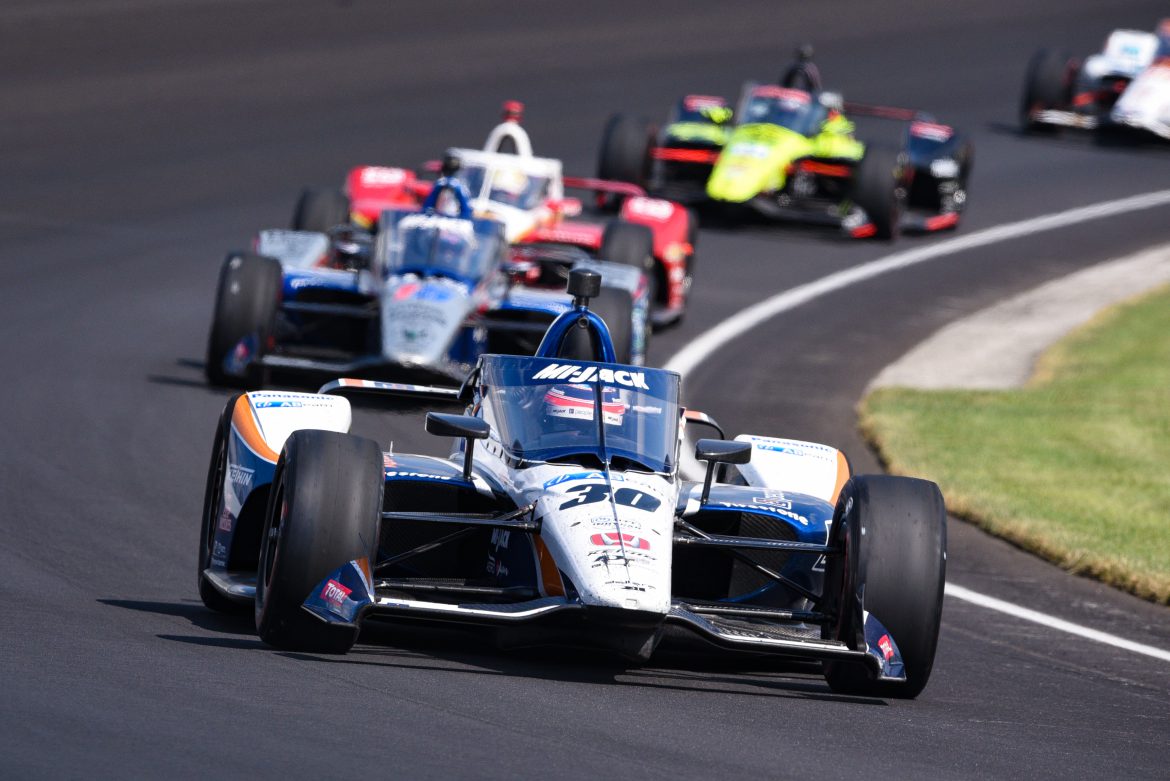There’s little doubt that had fans been present in the grandstands as the 104th running of the Indianapolis 500 sped to its conclusion, the majority of them would have been pulling for Scott Dixon.
Dixon owns five IndyCar Series championships and appears to be well on his way to a sixth title in this strange, COVID-impacted season. His glittering record also includes 49 race wins, but only one on the legendary oval at Indianapolis, back in 2008. A second Indy 500 victory would go a long way toward legitimizing Dixon – who trails only A.J. Foyt and Mario Andretti on the win list – as one of the sport’s all-time greats.
Dixon led 111 laps in this year’s race and appeared to be the man to beat for most of the afternoon. What he didn’t count on was another driver in search of his second Indianapolis triumph – Takuma Sato. The Japanese ace held the upper hand over his rival Honda pilot throughout the final quarter of the 200-lap contest and was out in front when it mattered.
With two Indy wins and a third-place finish in the last four years, Sato has quietly developed into an Indy 500 specialist. Throw in his near-miss at Indianapolis in 2012 (when he crashed on the 199th lap while disputing the lead with eventual winner Dario Franchitti), and Sato has rightfully earned his place as a hero in American racing folklore.
That’s largely because of the elevated status that the Indianapolis 500 has enjoyed for more than a century. Well into the 1970s, winning the Indy 500 was a much more significant achievement for a driver than winning the season-long championship, both financially and in terms of recognition. After 109 years, the race still maintains a measure of extra status and significance.
Nobody knows that more than Andretti. When he appeared on a popular television talk show after winning the 1965 USAC National Championship in his first attempt, Mario was introduced as the “Indianapolis 500 Rookie of the Year” for his third-place finish.
Andretti won the USAC title in 1965, ’66, and ’69, but his dominance of the era was not truly acknowledged until he won the 1969 Indianapolis 500. It would remain his only Indy win in 29 starts and despite all of his achievements, his career is still unfairly judged on the fact that he boasts only one Indy win whereas the likes of Foyt, Al Unser and Rick Mears won four.
“The Indianapolis 500 is the only race in the world that probably has as much value as any championship,” Andretti related. “It’s the only race that can change your life forever by winning it. That’s the reaction you get from all the people.”
As a multiple Indy winner, Sato joins an exclusive club that provides a level of fame in America that other drivers – even those as successful as Dixon – cannot achieve. It’s irrational to think that an annual three-hour race, no matter how historic, can carry more prestige and value than a year-long series of races. But that’s the way it is.
It’s a hard race to win. Just ask Fernando Alonso, whose frustration has mounted with each successive attempt. Or Michael Andretti. He has won Indianapolis four times as a team owner, but never reached victory lane as a driver despite leading nine of the sixteen ‘500s’ he started for a total of 431 laps. Mears led 429 laps in 15 starts and won four times.
In America, modern drivers don’t get the respect that legends like Foyt, Andretti and Mears enjoyed. Dixon, despite his 49 wins and five championships, is virtually anonymous on the sporting landscape. A second Indianapolis win would have gone a long way toward righting that wrong.
As Mario Andretti said, winning the Indy 500 changes a driver’s life. Sato learned that when he won in 2017. There’s a ton of responsibility that comes with being an Indy winner; it’s a life-long ambassadorial role. Many drivers don’t truly understand the magnitude of winning Indianapolis until they’ve done it a second time.
“Look, after turning 40 years old, to still be driving is living a dream,” Sato reflected. “People said that 2012 was probably my best shot, my peak, but we kept going. We had a second chance in life, and when you get a chance like that, you have to grab it. I never thought I would be winning the Indy 500, not once, but twice. Crazy!
“I don’t feel anything yet,” he added. “I think it’s coming later on. Exactly the same thing happened in 2017. I think I was just too excited for the first one.
“Now, of course, I realize what’s coming.”
-30-


